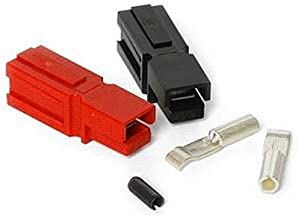Table of Contents
12v house power outlets
Full-timers and those with more robust system will likely want to install 12v power outlets in their van. Doing this means one can move electrical items around and plug them in where you want them.
the cigarette outlet
 The most common 12v outlet is the cigarette lighter outlet. Some are powered only when the engine is running1); you can take 10A from these at will. Some are powered all the time; you might charge a phone battery off these. Larger loads could deplete/damage the starter battery.
The most common 12v outlet is the cigarette lighter outlet. Some are powered only when the engine is running1); you can take 10A from these at will. Some are powered all the time; you might charge a phone battery off these. Larger loads could deplete/damage the starter battery.
If you are installing a ciggy port from scratch some, like the version shown on the right have USB outlets built in.
Pro:
- universal2)
Con:
- large
- typically limited to 10A or so
- notoriously unreliable connections, although Blue Sea makes a locking marine version that is robust
If you must use a ciggy port considering plugging in a wired extension/splitter as a sacrificial lamb. *When* the port dies it will be the replaceable extension and not the built-in port. The *wired* part is important, since it will flex and place no strain on the port.
breaking the 10A barrier
Ciggy outlet power is typically limited to 10A (~120w).
If you wanted to extract more power from the alternator you could wire in an isolator (plain solenoid or VSR). Instead of feeding an auxilliary battery this isolator would be used to pull more current into the living area. You could run 12v loads directly, or attach an inverter's input wires to the isolator's outputs.3)
other connector types
Advanced users often cut off the ciggy plug and use something superior for their needs.
Anderson
 The most common non-ciggy connector is the Anderson Powerpole.
The most common non-ciggy connector is the Anderson Powerpole.
Pro:
- when assembled correctly, polarity is assured even when you aren't looking
- slide together in pairs in different arrangments and directions
- robust, especially for frequent connects/disconnects
- power distribution blocks can be very neat and small
Con:
- more $$$
- need to be assembled4)
- the different possible arrangements means you'll need to pick an arrangement and stick to it
- a special crimper is recommended